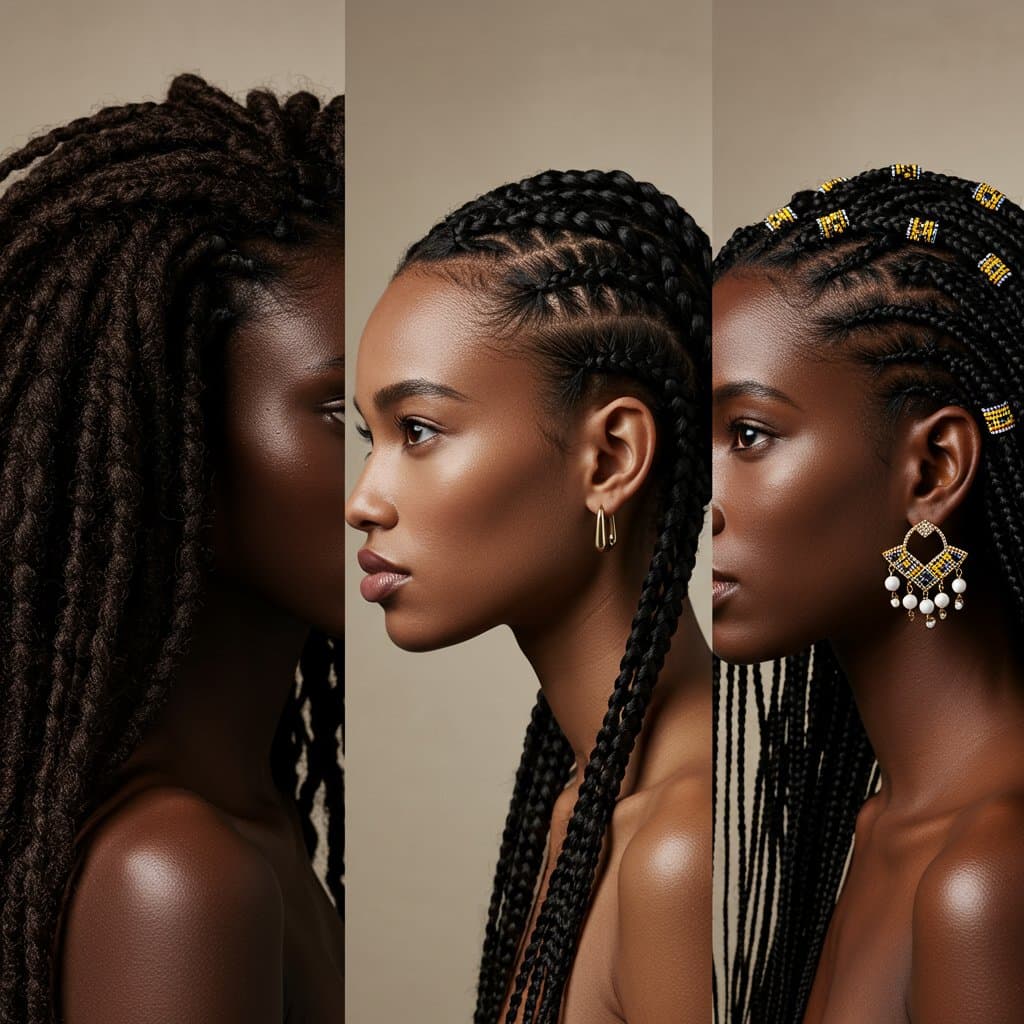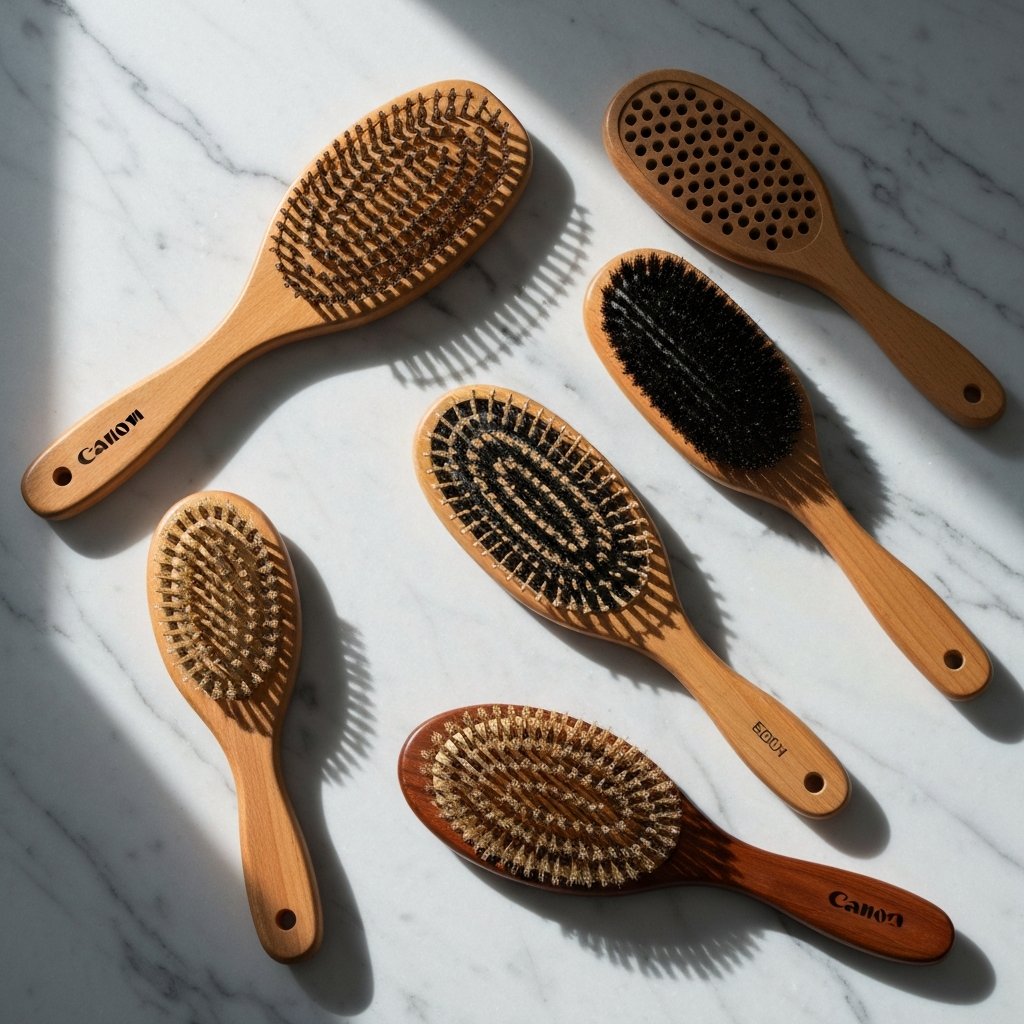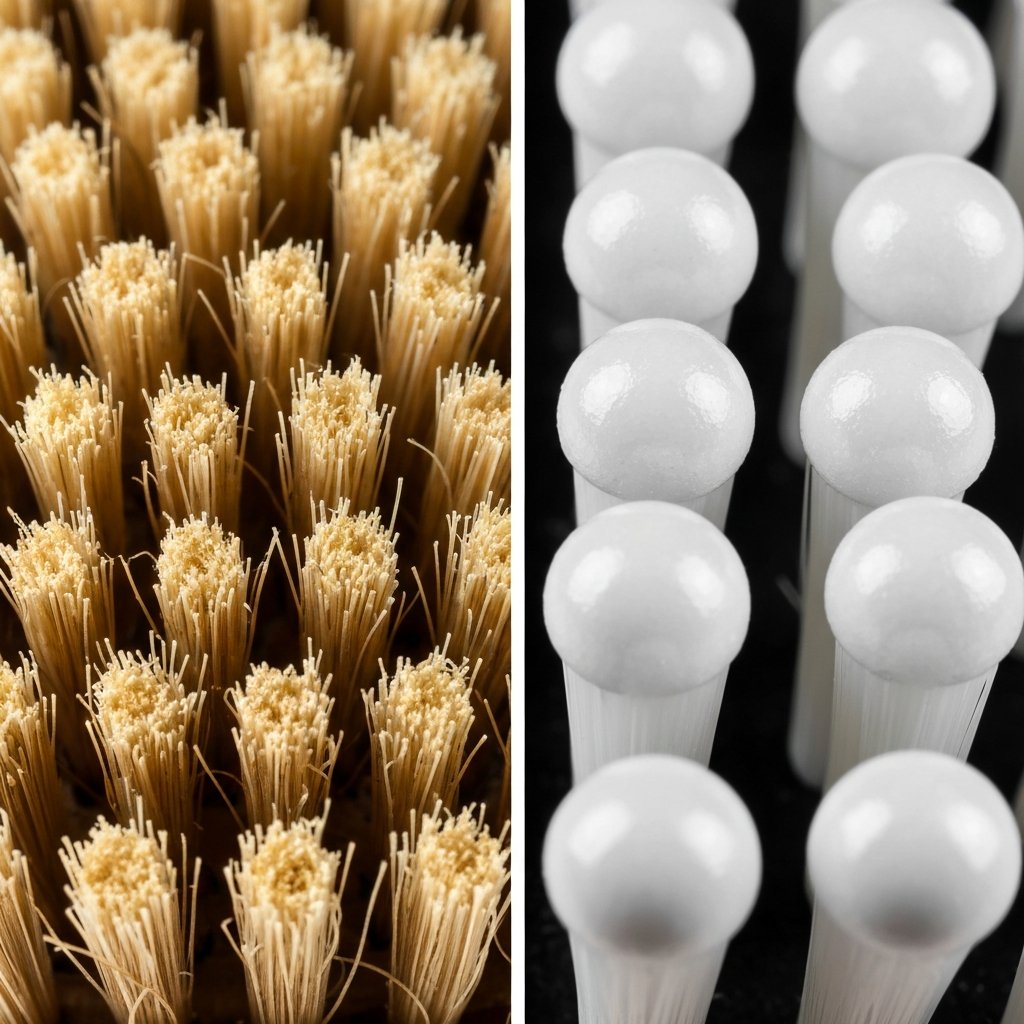
How to Make Fine Hair Look Thicker: Expert Styling Tricks & Product Guide
11 min read

11 min read

11 min read

9 min read

12 min read

10 min read

15 min read
When it comes to hair care, most people invest heavily in high-quality shampoos, conditioners, and serums, yet they often overlook the one tool they use every single day: the hair brush. Using the wrong brush can be just as damaging as skipping heat protectant or over-processing your color. It can lead to mechanical breakage, split ends, increased frizz, and even scalp irritation. Conversely, knowing how to choose the right hair brush can transform your hair’s health, enhance shine, and make styling significantly easier.

Every hair texture—from fine and straight to thick and coily—has unique needs. A brush that glides effortlessly through straight hair might cause disastrous breakage on wet curls. The science of brushing goes beyond simple detangling; it involves distributing natural sebum (scalp oils) down the hair shaft to protect the cuticle, stimulating blood flow to the follicles, and exfoliating the scalp. This comprehensive guide explores the nuances of bristle types, brush shapes, and specific recommendations for every hair type, ensuring you have the knowledge to curate the perfect toolkit for your tresses.
In professional salons, stylists rarely use a single brush for an entire appointment. They switch tools based on the task at hand—whether it is detangling at the bowl, blow-drying for volume, or smoothing the final look. By adopting this professional mindset and understanding the mechanics of different brushes, you can achieve salon-worthy results at home while preserving the integrity of your hair.
Before selecting a brush shape, it is crucial to understand the materials that will be touching your hair. The bristle type dictates how the brush interacts with the hair cuticle and the scalp. There are three primary categories of bristles found in professional tools: natural boar, synthetic nylon, and mixed bristles.

Fine hair is characterized by a small diameter of the individual hair strand, while thin hair refers to the density of follicles on the scalp. Both types are prone to breakage and can easily look flat or greasy. The goal for this hair type is to detangle gently without snapping the delicate strands and to add volume without weighing the hair down.

Thick hair (high density) and coarse hair (large strand diameter) present a different set of challenges. The primary issue is usually penetrating the density of the hair to detangle effectively and reach the scalp. A brush that is too soft will simply skim over the top layer, leaving the underneath tangled and the scalp un-stimulated.

For styling and smoothing, a mixed bristle brush is superior. The nylon pins are strong enough to grip the heavy hair sections, providing the tension needed for a smooth blowout, while the boar bristles help tame the frizz that often accompanies coarse textures. When blow-drying thick hair, a large diameter round brush is essential to smooth out the wave pattern and reduce drying time.
Curly and coily hair types (Types 3 and 4) are the most fragile because the twists and turns in the hair shaft create weak points where breakage can occur. Furthermore, the natural oils from the scalp have a hard time traveling down the spiral shape, leading to dryness. For these textures, brushing is less about 100 strokes a day and more about strategic detangling and definition.

For styling and defining curls, a brush with rows of widely spaced nylon pins (often referred to as a styling brush) is effective. These brushes help clump the curls together for better definition. It is crucial to look for brushes where the bristles are molded into the base rather than glued, as hair can get caught and snap in the small crevices of poorly constructed brushes.
Hair is at its weakest and most elastic when it is wet. It can stretch up to 50% of its length before snapping. Therefore, the mechanical stress applied during wet detangling is a leading cause of hair damage. Regardless of hair type, everyone needs a dedicated tool for wet hair.

Avoid using standard boar bristle brushes on wet hair. The natural bristles absorb water, becoming soft and ineffective, and their density can cause too much tension on wet, elastic strands, leading to significant breakage. Always pair your wet brush with a leave-in conditioner or detangling spray to provide "slip," reducing friction between the tool and the hair cuticle.
Achieving that professional salon blowout look requires a specific type of brush designed to interact with heat. The objective here is tension, heat conduction, and airflow.

Ceramic-coated round brushes are excellent because they heat up and act similarly to a curling iron, smoothing the hair from the inside out. For those seeking extreme volume, a smaller barrel creates tighter waves, while a large barrel creates straight, sleek looks with body. However, for hair that is already damaged or fragile, a wooden round brush with boar bristles is safer as it provides tension without the intense heat retention of ceramic or metal.
Even the highest quality brush can become a hazard to your hair if it is not maintained properly. A dirty brush harbors dust, old product buildup, dead skin cells, oil, and bacteria. Every time you use a dirty brush, you are redepositing this grime back onto your clean hair and scalp.

Q: Is it true that I should brush my hair 100 strokes a day? A: This is an outdated myth. While brushing does distribute oils, 100 strokes is excessive for modern hair that is often subjected to heat styling and coloring. Over-brushing can lead to friction damage and breakage. Brush only as much as needed to detangle and style.
Q: Can using the wrong brush cause hair loss? A: Yes, mechanical traction alopecia can occur from aggressive brushing or using tools that pull too hard. If you constantly hear snapping sounds while brushing, you are likely using a brush with too much tension or insufficient flexibility for your hair type.
Q: What is the best brush for hair extensions? A: Loop brushes or specific extension brushes are required. These have bristles that loop back into the base or have very flexible distinct lengths to glide over the bonds or tapes without catching and pulling the extensions out.
Q: Why does my hair get static when I brush it? A: Static is caused by friction, often exacerbated by dry air and plastic bristles. To combat this, switch to a natural boar bristle brush or a wooden brush, as these materials do not generate static electricity. You can also spray a little hairspray on the brush before using it.
Q: Should I brush my hair before washing it? A: Absolutely. Detangling dry hair before getting in the shower is one of the best habits you can form. It loosens scalp buildup and prevents water from locking in existing tangles, making the washing process gentler and more effective.
Choosing the right hair brush is not merely a matter of preference; it is a fundamental component of hair health. By matching the bristle type and brush shape to your specific hair texture and styling goals, you can minimize damage, enhance shine, and make your daily routine effortlessly effective. Whether you need the gentle touch of boar bristles for fine hair, the sturdy grip of nylon for thick tresses, or the definition of a styling brush for curls, the right tool is an investment in the longevity and beauty of your hair. Take the time to assess your current toolkit and upgrade where necessary—your hair will thank you for it.